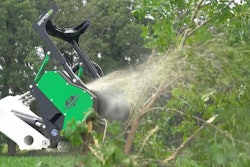
Landscapers should be focused on finishing the year strong but should also be setting realistic goals for 2014.
Creating a budget and sticking to it can make or break a business.
“For established small businesses, a budget can be used to take the pulse of the business, determining how the business is performing through the years, and helping identify possible future investments,” according to an article from Inc.com. “By regularly consulting a budget, business leaders can compare actual figures and catch potential business shortfalls or other problems early.”
Here are seven budget tips from Anchor Advisors:
1. Find a good budget template. These templates will give you a solid basis for starting the budget process and even give you an idea of the information you will need.
2. Create a sales forecast. How much are you going to sell next year? Some business owners pull a number from the air and decide, “20 percent growth!” Though many business owners have good intuition on these issues and their business, owners should have concrete evidence to support their estimated growth. Start with your current customers and project what can you expect from them for next year. Then, evaluate your sales pipeline.
3. Evaluate your manpower. If you are in a service business, growing your top line means hiring new people. You can forecast new hires by looking at each project and estimating the required staffing, or you can look historically at what your sales per employee have been and divide your new sales by that number to get the additional employees you will need.
4. Forecast your expenses. How much are you going to spend next year (i.e., equipment, supplies, wages)? Start with your Quickbooks file from this year. You can export a YTD Income Statement and set the columns by month. This provides you with how much your business spent in each category for each month of the year. Evaluate the list and mark those items that tend to vary with sales (i.e., payroll, marketing, etc.) and those that are fixed (i.e., rent, electricity, etc.).
5. Think about any known changes that will materially affect your results (i.e., conferences or trips, capital purchases, etc.).
6. With your sales and expense forecast in hand, as well as other pertinent information, you can subtract the projected expenses from the projected sales. This will provide you with a good, quantitative estimate of your upcoming year’s profit.
7. View your budget as a continuous process. Throughout the year, set definitive times for reviewing your budget and making any necessary additions or revisions.









